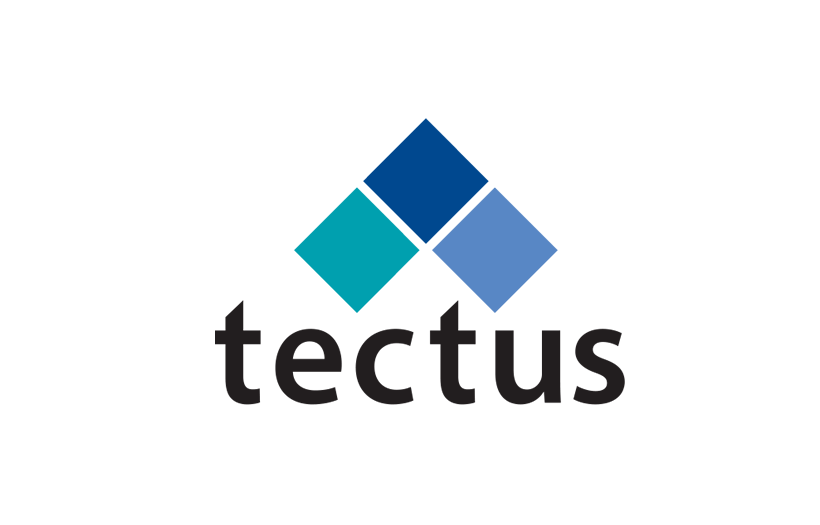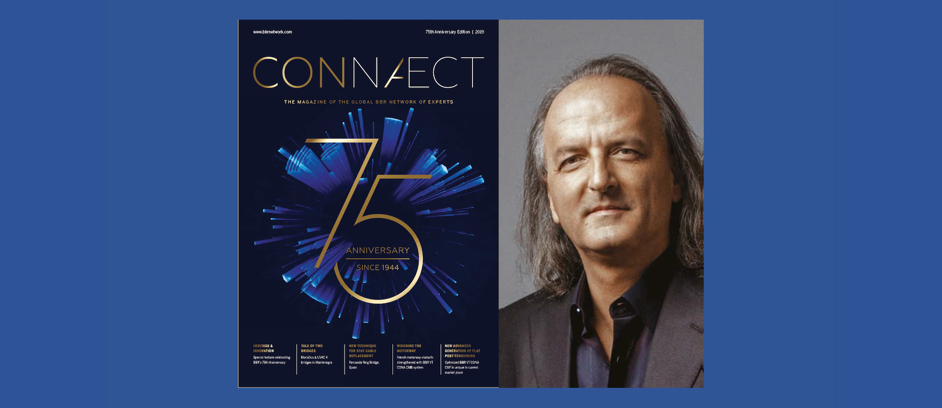Celebrating 75 years of innovation at BBR- an interview with Bruno Valsangiacomo, Executive Chairman of Tectus Group
For the 75th Anniversary edition of CONNAECT, Bruno Valsangiacomo, Executive Chairman of the family-owned Tectus Group shares his thoughts on the successes of BBR – past, present and future.
How do present market conditions differ from when BBR was founded 75 years ago?
At the time my father-in-law, Antonio Brandestini, was setting up the business which became BBR with his partners Max Birkenmaier and Mirko Robin Roš, the Second World War was drawing to a close. It was clear that the post-war priority for the construction industry would be the rebuilding of infrastructure and industry. The application of BBR post-tensioning technology promoted the use of less concrete and reinforcing steel in structures and also allowed a new freedom in design and engineering of structures. Nowadays,we still seek optimized materials usage especially with the global need to reduce environmental impact for a more sustainable world – and BBR continues to maintain a special focus on relevant construction technologies. Today we are confronted with a mega trend of aging infrastructure and buildings. Stakeholders have become aware of how important the monitoring and maintenance of structures has become in respect to safety, proper use and operation of infrastructure and buildings. The way of thinking is slowly and carefully adapting to a Net Present Value (NPV) approach. It is important to calculate the NPV of each structure taking into account construction cost, maintenance and repair, continuous income and lifetime. Proper monitoring and maintenance are key for an optimal NPV of a structure. In addition, I also apply the term ‘Economic Impact NPV’ – especially to critical infrastructure. For example, a tunnel may cost US$100 million to construct, then an unplanned maintenance exercise due to inadequate monitoring and inspection may last 48 hours and cost US$0.2 million, but the fact that a critical tunnel had to be closed (in this example which did happen in the real world) costs the economy US$1 million per hour, hence a cost of US$48 million in Economic Impact NPV. With all the aging infrastructure and all the new global mega projects, our industry will change radically. The BBR Network must grasp this opportunity as much economic value is at stake. A crucial issue which has been hanging over the construction sector for decades is the lack of productivity growth,
which has been less than 1% annually – much lower than that achieved in other industries. When one thinks that currently construction-related spending accounts for roughly 13% of the world’s GDP, it is clear that by improving efficiency and increasing productivity at the various levels will bring tremendous benefits to everyone, whether this is in the form of savings or in the form of being able to execute more projects with the same resources. Therefore, productivity growth in construction is another main driver in our industry. Also here a holistic view is vital and productivity will also include the Economic Impact NPV. It will make an enormous difference if the building of a structure can be carried out, for example, in six instead of 18 months. The construction cost may even become a negligible factor, as the disruption of a megacity may be the more relevant
cost to consider.
What advantages are there today?
It is not easy to develop new construction technologies and materials. Optimization of materials, equipment and human resources will be key, in addition to the optimization of an entire planning and execution exercise. Last but not least, only the integration of cost, revenues and economic impact of the life cycle of a structure will give a completely different perspective to the stakeholders. We are now in a phase of rapid development and use of IoT, planning, monitoring and inspection technologies, visualization and predictive simulation by efficient use of Artificial Intelligence. BBR, in cooperation with the Tectus Group, will leverage these developments to create competitive advantage with sustainable value creation for all parties involved. This is a path BBR embarked upon some years ago when it introduced BBR E-Trace – a unique-to-the-market cutting edge tool for trading, quality control and traceability management. One platform able to do all that for the entire BBR Network, this is definitely an example of how we have been front-runners in innovation and technology.
We are continuing to innovate at BBR and the Tectus Group. We have been early in starting to work on new ways on how to use the newest technology for inspection and monitoring structures which we have begun to roll out with Screening Eagle, Proceq and Tectus Dreamlab. We will also make these new technologies available to our BBR Network Members.
What do you believe makes a business successful?
You need to be curious, to have passion, to do your homework thoroughly, to ask others who may know better, to make a plan and, crucially, to take decisions and to execute with a target of optimum operational excellence. The key factor is to have the right people and to give them authority and responsibility, but also to make them accountable. Everything else is a consequence of the above – motivation, career, remuneration, satisfaction and all those things that are required to be part of a success story. Since I started to take the lead at the Tectus Group in 1993, we have tried our best to live up to the above values and I firmly believe that this has been one of the main reasons for our consistent and continued success.
What do you expect to see from BBR in the next 75 years?
There are dramatic changes coming up. In today’s world, it is not a question anymore of how accurately we were able to stick to the original plan, but rather a question of how fast, how agile and how close we are able to sail to the ever-changing storms of the markets and how smart we are in leveraging the exponential disruptions that are happening all around us. Globally, we face many challenges – in how we will live, work, manage the infrastructure which has become the neural networks of our society, cope with climate change which affects everything including structures, manage environmental issues… to name just a few items. As a specialist construction technology business, we are focused on carving our own niche where we can create value and justify our price through such value creation. We have a rich history of innovation and will continue to draw on this to support the global community in meeting future challenges. There are exciting times ahead and I am looking forward to them.




